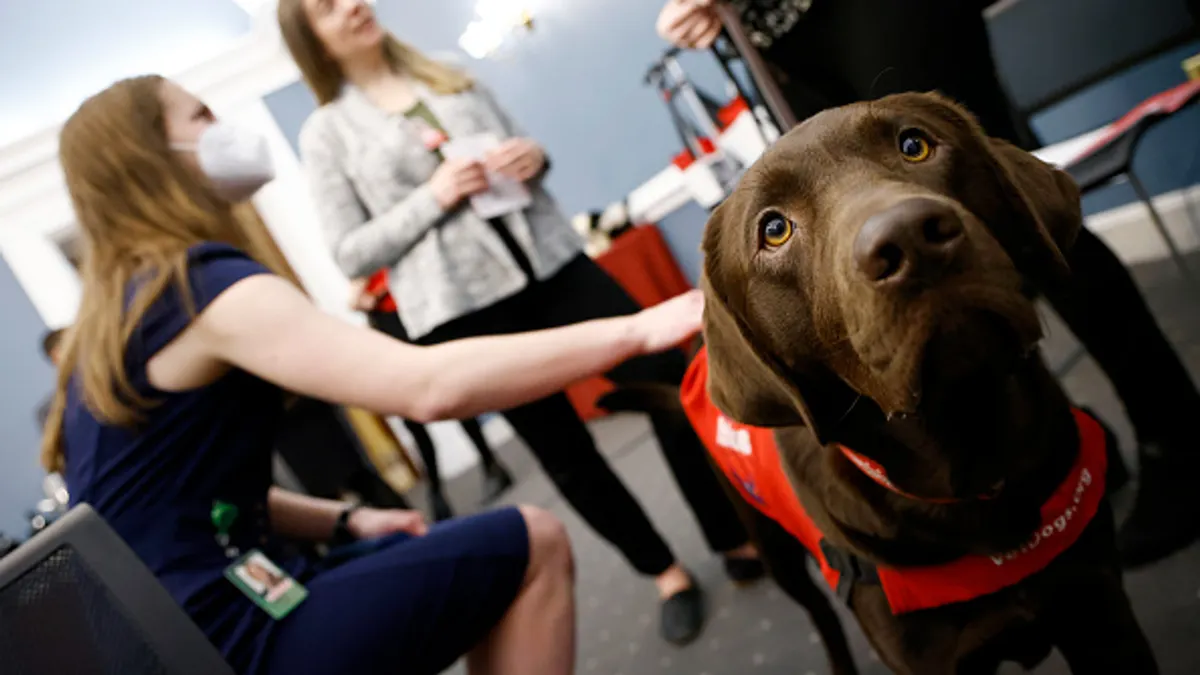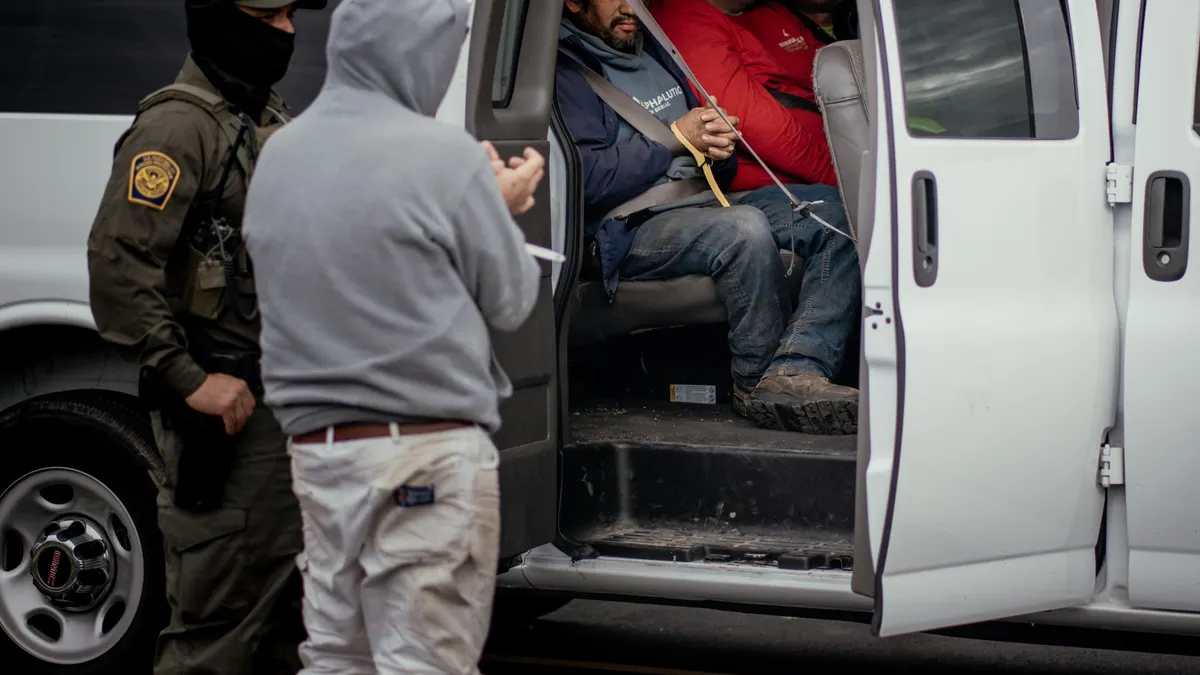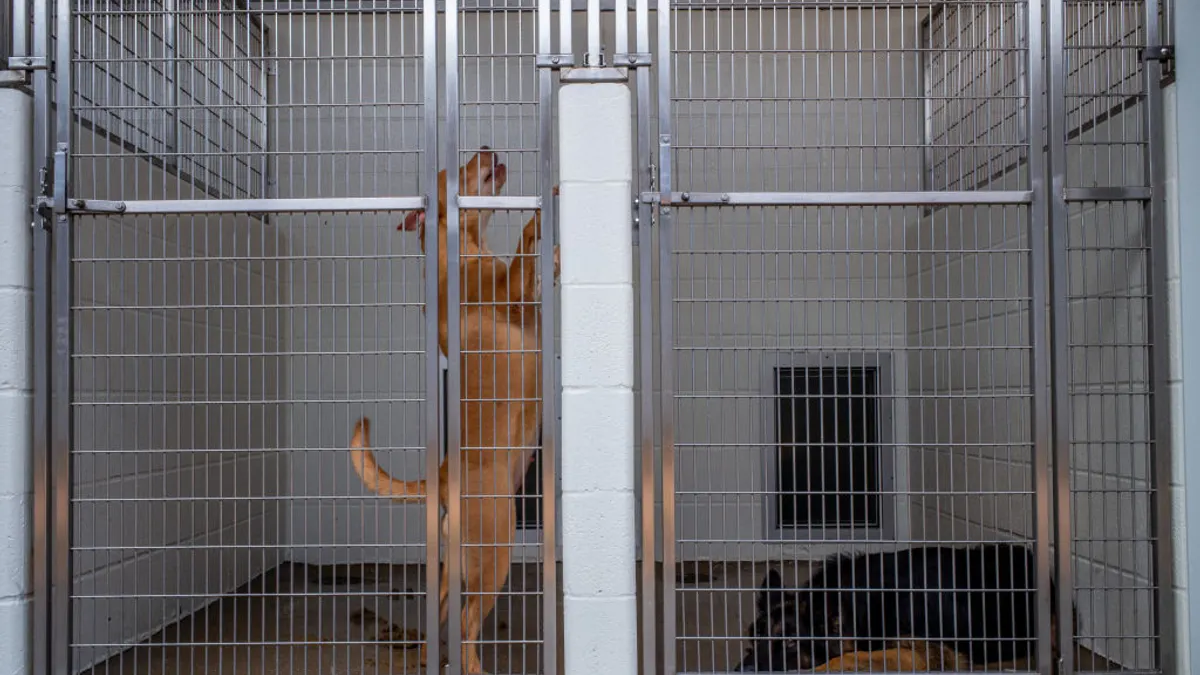Active shooters pose a legitimate threat to employers — between 2000 and 2018, 277 active shooter scenarios took place in the U.S., with the vast majority of them occurring in the workplace, according to data from the U.S. Department of Justice Federal Bureau of Investigation (FBI). But these events make up a small portion of the overall workplace violence employers face.
While the active shooter threat is real, it is unlikely most workplaces will directly encounter an active shooter, said John Dony, director of the Campbell Institute at the National Safety Council (NSC). While he said he thinks employers should address that specific facet of workplace violence, he emphasized that employers can prepare for active shooter scenarios by readying their organizations for any kind of workplace violence. "I think we need to tackle this issue on many different fronts, not just on the active shooter side," Dony said.
Recent events illustrate this tension between the apparent frequency and improbability of workplace shootings. A lone gunman killed 22 people on Aug. 3. It happened in a workplace — a Walmart store in El Paso, Texas. A day later, another man killed nine when he opened fire on a Dayton, Ohio, street lined with bars and restaurants.
In its report, the FBI sorted each of the 277 active shooter scenarios between 2000 and 2018 into categories: commercial areas, education environments, government properties, houses of worship, healthcare facilities, open spaces and residences. Forty-nine of the 277 incidents took place in an open space or residence, the two categories least likely to host an employer. That leaves 228 scenarios that happened in places where people work. Of course, individuals such as waste collectors, street cleaners, street vendors and doormen, handymen, housekeepers and remote workers may work in open spaces and residences.
Given the frequency with which active shooter scenarios play out in workplaces, employers must assess the impact such threats could have on employees and business operations, said Ann Potratz, an associate editor with J. J. Keller & Associates who said she was heavily involved in creating her company's active shooter scenario training. "A lot of employers are afraid to discuss this because even suggesting this could happen is terrifying," she said. An employer's silence on this issue is a mistake, she said: "Not talking about this is the worst thing you can do. Pretending this is never going to happen is the worst thing you can do for your employees."
In 2017, work-related assaults created 18,400 injuries and illnesses that resulted in days away from work, according to NSC data. The same data revealed 458 people died from work-related assaults in 2017. Of those, 351 individuals were killed from shots intentionally fired by another person at work. Stabbings, physical aggression (such as hitting, kicking, beating and shoving), "multiple violent acts by another person" and strangulation comprised the other types of fatal, work-related assaults.
As the data makes clear, employers must prevent and prepare for active shooters, as they cause 76% of the fatalities associated with workplace violence. But, as revealed by NSC's data, non-fatal incidents of workplace violence occur at a vastly higher rate than those that end in death.
As employers attempt to mitigate workplace violence and, at the same time, active shooter threats, leaders and HR professionals can think of their efforts as a two-step process, Dony said. In the first step, employers will create a policy that defines workplace violence and spells out the consequences of such behavior.
The second step is much harder, Dony said, because it requires employers to build a culture that prevents workplace violence by promoting safety and support.
This process makes room for an active shooter scenario strategy. "When it comes to the specifics of the active shooter side, that's when you can get more tactical and programmatic, when you can build protocols and drills and face the issue," Dony said.
Put together a policy
Workplace violence is "any act or threat of physical violence, harassment, intimidation, or other threatening disruptive behavior that occurs at the work site," as defined by the U.S. Department of Labor (DOL). Such behavior includes threats, verbal abuse, physical assaults and homicide, DOL said. This behavior could be exhibited by someone with no relationship to the victim or the workplace, some type of consumer within the workplace, a current or former employee or someone who has a personal relationship with an employee, according to the FBI.
Workers need to understand what workplace violence is and comprehend consequences they will face if they carry out that violence, Dony said. A workplace violence response policy should "clearly state … that violence is not permitted and will not be tolerated," according to guidance published by the Occupational Safety and Health Administration.
Aside from understanding the zero-tolerance expectation, employees also need to know what to do when violence occurs in the workplace. "What are your emergency guidelines? You've got an employee handbook. You probably have fire drills, tornado drills — what happens in that type of emergency?" Employco USA President and Employment Expert Rob Wilson said. And what happens when someone fires a gun in the workplace, he asked: "What are your security protocols? Where do people go? Who contacts emergency services?"
"We know it takes split seconds for something like this to happen."

John Dony
Director of the Campbell Institute at the National Safety Council
Employers need to think through all of these scenarios and define protocols. Employees should be able to access any emergency response guidelines in their employee handbook, but Wilson encouraged leaders to go further. "As a management team, you should dig deeper and have a bigger process," he said. When violence erupts in the workplace, no one will look in the handbook before making a move, he pointed out. "It's good to have that, but you really have to have it prepared so as a management team you start with that process."
Emergency response protocols in a factory will differ from those defined for a retail setting, said Norman Ford, VP of operations at Compliance Solutions, Skillsoft. "It depends on the industry. There are a lot of industries where workplace violence is particularly problematic," he said. "I would recommend you look toward the experts." Leaders can contact law enforcement, security firms and other security experts to help them build protocols specific to their industry and unique risk profile.
For active shooter scenarios specifically, employers will want to have protocols in place that give them more time to react, Dony said. "We know it takes split seconds for something like this to happen," he said. "If there is any delay at all in terms of notifying emergency services, that really could cost lives." Employers will need to invest in robust, forward-facing security measures, position their front-desks "as removed as possible from the potential shooter" and test any alarms and response systems regularly.
Good workplace violence policies will define behavioral expectations and outline immediate responses. They will also help employers recover in the wake of tragedy, Wilson said. "What if something happens and we can't return to work? Where do we go from an operations standpoint? How do we get back to business?" he asked. Robust policies answer these questions.
Employers should consider their specific violence response plans in the context of both their organizations and communities. Wilson encouraged employers to define the expectations for work schedules and productivity following an episode of violence. "Have some flexibility for people who are grieving on different levels," he said.
After an event at work or in the nearby surroundings, employers may want to provide grief counseling, especially if the violence impacted employees or their communities directly. "Look at who you're bringing in and how you're going to do it," he said. "You don't want to pull out Yellow Pages the day after." Employers will also want to think about their outward response to violence. Some organizations may want to hold a food drive, create a memorial or build a scholarship fund to honor those who died. This response could resemble the company's approach to a worker's death due to a health crisis or an accident, he said.
Build a culture of safety
Once an employer has defined a policy, it has arrived at the next, and much more difficult, step of Dony's two-part process: building a culture that activates the policy. To achieve this, organizations must present a united front. "You really need to have a strong connection on all fronts of the organization to build that culture and make sure that happens," he said. "It's tough."
Prize prevention
The best way to deal with violence is to stop it before it occurs, Potratz said. To mitigate violence perpetrated internally, employers will need to train workers and managers to spot behavior that could indicate violence. "It's really important that workers understand when someone is behaving in a way that is a red-flag signal," Ford said. It's equally important they take some type of action after witnessing that behavior, potentially by reporting it to a supervisor, to HR or to law enforcement.
The DOL categorizes warning signs of violence into three levels. The first level, the early warning signs, includes behaviors that are intimidating or bullying, discourteous or disrespectful, uncooperative, verbally abusive or a combination of those traits. DOL advises witnesses of such behavior to report and document their observations. It also encourages supervisors to meet with the offending worker privately and:
- "Get straight to the point.
- "Ask the employee for his or her input.
- "Ask the employee what should be done about the behavior.
- "Ask how you can help.
- "Identify the performance and/or conduct problems that are of concern.
- "Identify the steps you would like to see to correct problems.
- "Set limits on what is acceptable behavior and performance.
- "Establish time frames to make changes and subsequent consequences for failing to correct behavior and/or performance."
The next level of warning signs includes arguments, refusals to obey policies, verbalized wishes to hurt others, written threats of violence and articulation of being victimized by the employer. These actions may prompt witnesses to contact emergency services, DOL said. Witnesses should contact their supervisor immediately, secure their own safety and the safety of others and document their observations. A supervisor should meet with the employee in question, remain calm and determine if the worker is able or willing to follow directions, DOL said. The supervisor should ask key questions, such as:
- What can you do to try to regain control of yourself?
- What can I do to help you regain control?
- What do you hope to gain by committing violence?
- Why do you believe you need to be violent to achieve that?
The last level may include suicidal threats, physical fights, destruction of property, display of rage, the use of weapons against others or a combination. Those who witness any of this behavior should call 911, seek personal safety, contact a supervisor and cooperate with law enforcement upon their arrival, DOL said.
Active shooters have been known to exhibit similar behaviors leading up to their attacks. In a 2018 report that examined 63 active shooters, the FBI concluded that active shooters experienced multiple stressors in the year before they attacked. Each shooter exhibited four to five concerning behaviors that were visible to those around them, the report said.
Thirty-nine of the 63 shooters displayed mental health stressors, the report said. It's important to note, however, that the "FBI could only verify that 25% of active shooters in the study had ever been diagnosed with a mental illness." The FBI noted that a mental health stressor indicated that "the active shooter appeared to be struggling with (most commonly) depression, anxiety, paranoia, etc. in their daily life in the year before the attack."
Thirty-one of them faced financial strain. Twenty-two of them dealt with job-related strains. Other stressors included conflict with friends or peers, marital problems, substance abuse and physical injuries. Only one shooter displayed no stressors.
Dony, Ford and Potratz each emphasized the importance of familiarizing workers with these warning signs. They all qualified that statement, as well. "We need to be careful about labeling everyone a potential active shooter," Ford said. "I think there's a series of incidences or red-flag warnings that I think good training puts into place and helps folks make the determination as to when to report it."
Encouraging employees to watch for potentially indicative behavior may help develop a culture of support and care within a workplace, Potratz said. "Watching for signs like this can get them the help they need even if they have no intention of being violent," she said. "This isn't about watching for someone who's going to become an active shooter, this is about pulling together and watching out for each other."
This type of culture may spur one worker to check in on another after he or she has a couple bad days, for example. It may turn out to be nothing. But such a conversation could help struggling workers get connected with resources like employee assistance programs, Potratz said.
Dony echoed this sentiment. "I'm the first to say you don't want to create a culture of paranoia and you don't want to further stigmatize mental health issues. That's where it gets tough," he said. "You want to empower people to care for each other without making it feel like you're pointing a finger and tattling on someone."
Provide the training ‘benefit'
Training is an important part of an employer's overall emergency response plan. In fact, it's HR's responsibility to offer training courses on workplace violence, according to the DOL.
For active shooter trainings to be effective, they need to be ongoing, according to Terry Choate, the Co-Founder and CEO of Blue-U Defense, a self-described training and behavior awareness company that specializes in extreme violence. "Just a single or periodic training course will not keep people safe," Choate told HR Dive in an interview. "It takes a continuous, ongoing effort to make sure that actually happens."
"If we are not prepared mentally, that's doing nothing to keep people safe."

Terry Choate
Co-Founder and CEO of Blue-U Defense
Choate noted that the positive feedback from his trainees has illustrated the value of active shooter preparedness training. "It becomes more of a benefit than a training course," he said.
Most trainings, including those offered by J.J. Keller, Skillsoft and Blue U, teach attendees some version of the avoid, deny, defend (or run, hide, fight) principal. "The key becomes how and where do we run, how and where do we hide, how do we fight?" said Choate. "If we are not prepared mentally, that's doing nothing to keep people safe."
Ford reiterated the importance of specific, engaging training for active shooter scenarios. "Hopefully that incident will never occur, but if you're caught in a life-and-death situation, you want to remain calm. What will help you remain calm is preparedness. You'll act on proper instinct rather than panic," he said.
Without this training, panic can take over employees if an active shooter threat materializes. "When panic takes over, you don't act rationally," he said. "If you've been trained on a situation, the training takes over and you act unconsciously. That's why it's really important that the training is good, based on brain science, relative and emotionally impactive."
An important aspect of such training is drills, Ford said. These must be handled with extreme care, multiple sources warned. Drills will "cause a measure of alarm and fear" among employees, Dony said. "I've seen instances where employers will bring in folks who are fully dressed to simulate this thing, with blanks and guns and things of that nature," Dony said. "In my opinion, that's going too far. You want people to be able to understand what it would be like to confront this situation without creating any undue trauma or creating panic."
Free online resources:
- Active Shooter Preparedness from the Department of Homeland Security's Cyber and Infrastructure Security Agency.
- The Federal Emergency Management Agency's independent study program.
- Skillsoft's active shooter training.





















